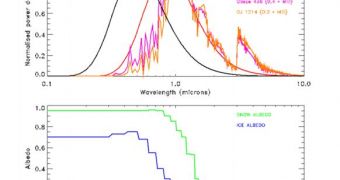Scientists have recently established that habitable zones around red dwarf stars are in fact about 30 percent larger than initially reported. A habitable (or Goldilocks) zone is an area around a star where temperatures are just right to support the existence of liquid water on the surface of an object.
Earth lies right in the middle of the Sun's habitable zone. Venus and Mars orbit at the inner and outer edges, respectively, which is why none of them can now support liquid water on the surface.
All class of stars – including massive fireballs, and yellow, white and red dwarfs – have such an area around them. Extrasolar planets or moons that orbit their parent stars in this region meet two of the most essential conditions needed for life to develop.
The fact that red dwarfs are apparently a lot more capable of supporting water – and maybe even life – is good news for astrobiologists, who have been looking for potentially-habitable worlds for many years, Technology Review reports.
The new study, entitled “Suppression Of The Water Ice And Snow Albedo Feedback On Planets Orbiting Red Dwarf Stars And The Subsequent Widening Of The Habitable Zone,” is published in the online scientific journal arXiv.
The investigation was led by Manoj M. Joshi, who is based at the University of Reading National Center for Atmospheric Science (NCAS) and Robert M. Haberl, who holds an appointment with the NASA Ames Research Center (ARC) Space Science and Astrobiology Division.
Astronomers say that it's very difficult to analyze the extent of a star's habitable zone without direct measurements, and using the limited technological means that are at our disposal today. The size and temperature of the star itself are the most important factors, but many other can change the result.
For instance, the exoplanet's albedo – the amount of light its surface and cloud cover reflect back into space – is also an important factor. What the research team did in the new study was essentially find a new factor contributing to the range of the habitability zone around a red dwarf.
Red dwarf stars emit much of their light in infrared wavelengths, which means that the albedo snow and ice usually have diminishes constantly. The values researchers used until now were those that appear when visible light bounces of frozen water.
As such, exoplanets around red dwarf stars may in fact be absorbing a lot more of the heat their star throws at them, reflecting only minute amounts back into space. “The albedos of ice and snow on planets orbiting M-stars are much lower than their values on Earth,” Joshi and Haberle conclude.

 14 DAY TRIAL //
14 DAY TRIAL //